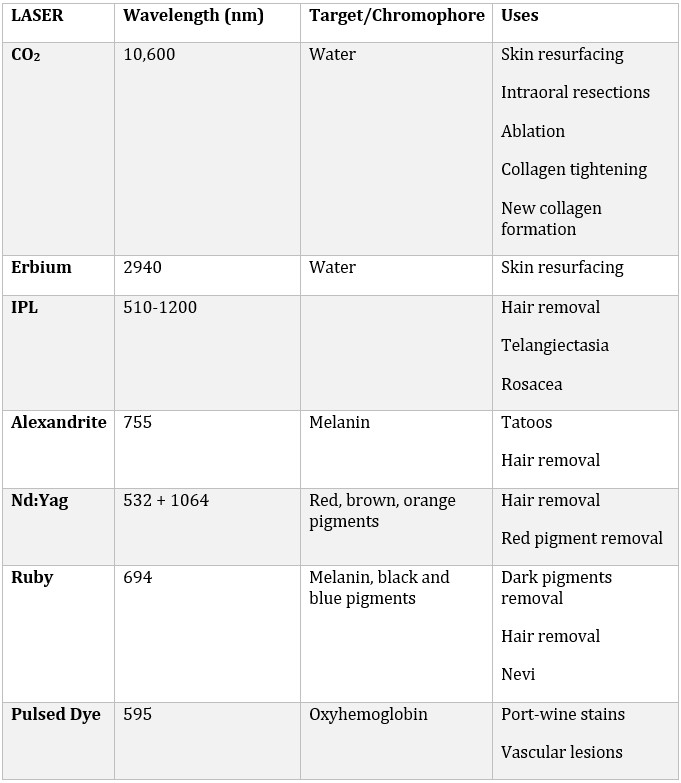LASER
Overview
LASER stands for Light Amplification by Stimulated Emission of Radiation. A laser beam is created when the electrons in atoms in special gases or crystals absorb energy from an electrical current and become “excited.” The excited electrons move from a lower-energy orbit to a higher-energy orbit around the atom’s nucleus. When they return to their normal or “ground” state, the electrons emit photons (particles of light). These photons are all at the same wavelength. This particular wavelength of light is determined by the amount of energy released when the excited electron drops to a lower orbit. Various lasers produce light of different wavelengths, target different chromophores within the tissues, and they are used to treat various conditions
Laser applications in Oral and Maxillofacial Surgery
- Tumour resection (TOLS – trans oral laser resection, CO2 Laser)
- Ablation of oral dysplasia (CO2 Laser)
- Ablation of oral lichen planus (CO2 Laser)
- Facial skin resurfacing (CO2 or Erbium Laser)
- Hair removal (Ruby or Nd:Yag Laser)
- Skin wrinkling (CO2 Laser)
Safety
Any surgeon using the Laser should comply with the in-house laser safety policy and must attend a laser safety course. Anyone involved in laser treatment should wear protective goggles (to avoid ocular injury) and face mask (as the laser plume can transmit certain bacteria and viruses). Other risks include burn, prolonged erythema, skin irritation and hypertrophic scarring. Most of these can be avoided with the correct use of the equipment.

